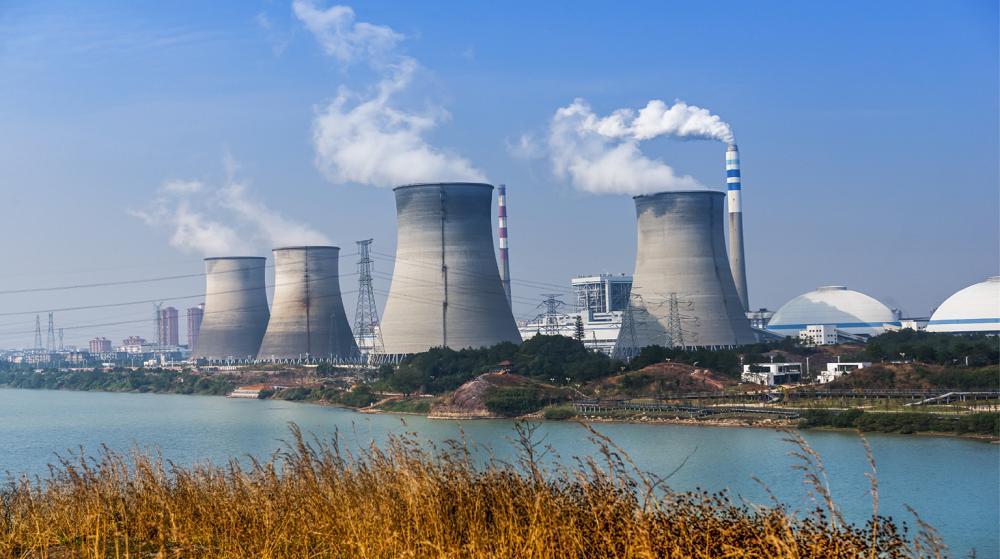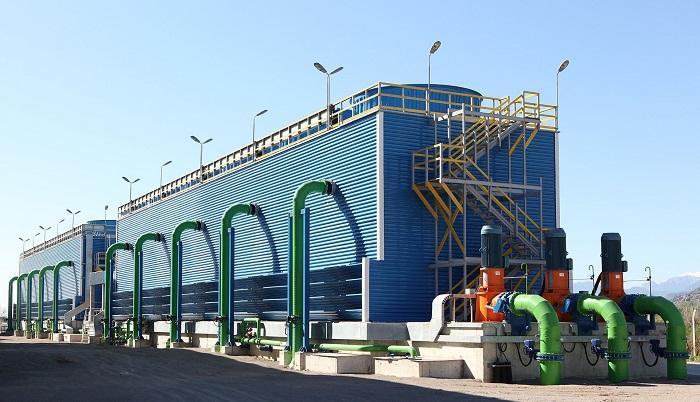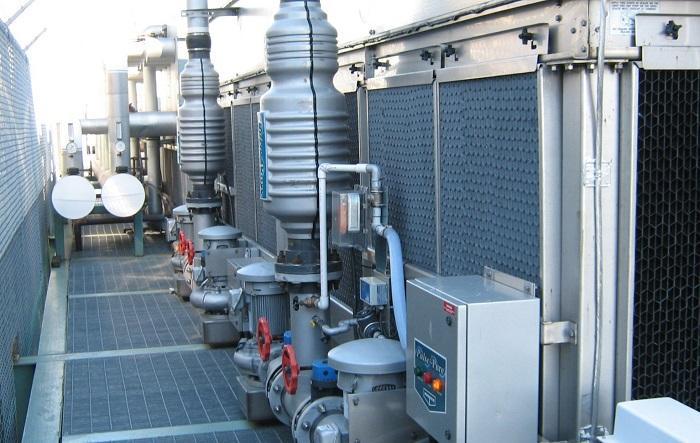Cooling towers are an integral component of many refrigeration systems. They are the point in the system where heat is rejected to the atmosphere through the evaporative cooling process. Cooling towers are commonly found in industrial applications and are also often applied to water-cooled chilled water plants in medium to large commercial buildings. The thermal efficiency and longevity of the cooling tower and equipment depend on the proper management of recirculated water. In this short review, we are going to talk about cooling tower water treatment. Linquip has gathered some useful information and tips on this topic to help you know more about the water treatment of cooling towers. Stay with us and read on.
The Importance of Cooling Tower Water Treatment
Heat is a side product of manufacturing and machine operation. Heat can be useful but most processes require the hot machines and manufactured goods to be cooled. Traditionally, machines are cooled by chillers or cooling towers, but with the growing concern around energy, carbon, and water efficiency, passive and simple cooling systems (e.g. air-cooling fins and below-ground heat exchangers) are making a come-back. Companies should always seek to reduce heat gain with insulation and a well laid out plant with intakes, exhausts, hot and cold plant locations.
Cooling towers and chillers can be responsible for as much as 90 percent of site water use. Sometimes a single system may be using more than 50 percent of required water. Saving water saves money. Not only savings on bills for potable water but trade waste, chemical treatment, and energies such as fuels, electricity, and carbon emissions. A recent review of cooling towers found 11% of systems were using 30% of the total volume of all reviewed systems, and that after implementation of water-saving recommendations, these inefficient systems cut their water use by a phenomenal 51%.
In the following sections, we will find some information about the cooling tower types and also ways and techniques used to achieve great success in saving water in the cooling towers. It is great to know different types of cooling towers to understand how better the cooling tower water treatment can be done to save the water and achieve more efficiency.
Types of Cooling Towers and Their Operation Principle
In the following sections, we are going to get acquainted with different types of cooling tower and their mechanism and operation principle. Generally, cooling towers are classified into 4 categories of open-loop, closed-loop, once-through system, and hybrid. Read on to know more about the cooling tower water treatment.
-
Open Loop
Open-loop cooling towers spray the hot water into the air inside the tower to cool as it falls. Some of the water evaporates and the remainder falls to the bottom where it is collected and used again.
-
Closed Loop
Closed-loop cooling towers use a heat exchanger within the cooling tower to keep coolant flow and evaporative water flows separate, reducing the risk of coolant contamination. These systems are almost as effective as open-loop and are more expensive and safer. They can be run dry or with reduced evaporative water flow on cooler days or when the heat load is low.
-
Once-through Systems
Once through systems generally use water in a single pass to cool the plant before disposal to trade waste. Water use can be minimized by stopping leaks, reducing heat load, and minimizing cooling water flow. The best savings are made by replacing once-through systems with cooling circuits, by plumbing into existing cooling circuits and closed-loop systems. At a minimum, the outflow should be reused in other processes.
-
Hybrid
Hybrid systems use a closed circuit with a dry heat exchange followed by a closed-loop cooling tower. These offer the best of both dry heat exchange systems and cooling towers with minimal water usage for the same heat rejection. The downside, however, is higher energy usage and higher system cost.
Now that you are familiar with the four main types of cooling towers and their working principle, let’s have a look at the areas from which we can improve water efficiency in the cooling towers’ system.
Areas to Improve Cooling Towers Water Treatment
There are 4 areas where cooling tower water consumption can be reduced:
-
Evaporation
Evaporative cooling is integral to open-loop cooling towers, based on some researches, water consumption cannot be significantly reduced without degrading the cooling tower’s performance. However, locating the system in a hot and windy position will increase water waste. By reducing the heat load on the cooling tower using a dry or closed-loop system, the evaporative cooling work can be reduced.
-
Blowdown
Blowdown water is a vital process to preserve the long life and efficiency of equipment as it reduces the buildup of solids such as salts, dirt, calcium, and rust in the system. Measuring cooling water conductivity is a typical way to monitor the frequency of blowdown discharge. In this area, water consumption can be reduced by improving the quality of feed water, optimizing the cooling tower process, and removing solids from blowdown water before recirculating this water into the system.
-
Reuse of Blowdown
A growing number of companies are now saving blowdown water to reuse onsite instead of using potable water. Blowdown water is typically higher in dissolved solids but can be used for wash down, cleaning, and toilet flushing.
Depending on the types of plants and grasses in the gardens, blowdown water can be used to offset or replace irrigation water. It is clever to test this water on a small section of the gardens to see if there are any negative effects on the produce. If there is chemical compatibility, blowdown can also be deionized and reused in the cooling circuit.
-
Drift, Splash-out, overflow, and other losses
obviously, the cooling tower efficiency can be improved by locating the tower in areas not exposed to high winds or excessive heat. Winds can cause spray drift and splash out from air inlets. Some features in the overall design such as drift eliminators or internal walls will reduce water loss in open-loop cooling towers. In some cases, drift from the cooling towers may put on a public health issue.
Overflow can happen when a poorly adjusted float valve or bad design lets the tower overfill and consequently, water flows straight out the overflow into the sewer. This problem can be easily avoided by checking during routine maintenance and by monitoring water consumption. Consider that the overflow water can also be diverted to storage tanks for reintroduction either with or without processing for use in the make-up water. Make-up water is the water added to compensate for all the water losses through the system. The more efficient the system the less make-up water needed.
Leaks can be detected either by inspection. Leaks, even small ones in appearance, can be significant. in some cases, almost 30% of a company’s water usage can be provided by the water leakage.
Conclusion
Cooling tower water treatment is indeed an arrangement of techniques that remove damaging impurities from your cooling tower feed water, circulation water, and blowdown. In this article, we tried to deliver some essential pieces of information that can help you to improve the water consumption in your cooling tower system. We will be glad to have your opinions and experiences of using different practical techniques to have a better and more efficient cooling tower water treatment. If there are still some ambiguities in your mind about this topic or may you have some questions about water treatment in cooling towers, sign up on Linquip website. Our experts are ready to help you and answer your questions. Hope you enjoyed reading this article.
Buy Equipment or Ask for a Service
By using Linquip RFQ Service, you can expect to receive quotations from various suppliers across multiple industries and regions.
Click Here to Request a Quotation From Suppliers and Service Providers
Read More In Linquip





